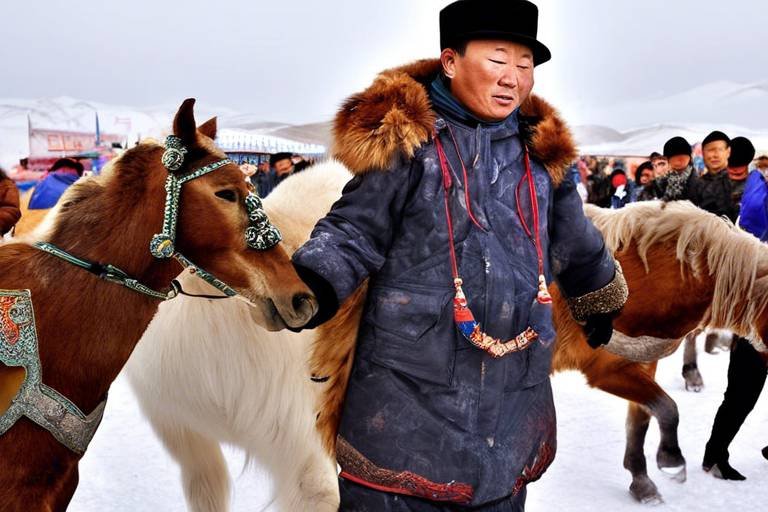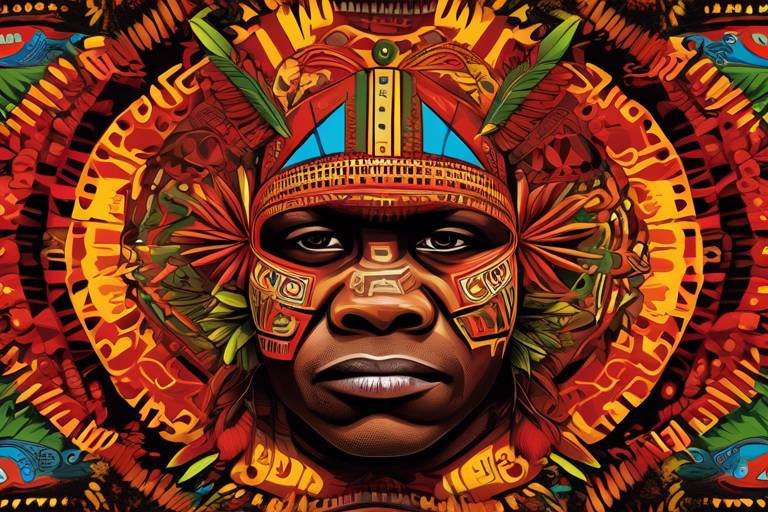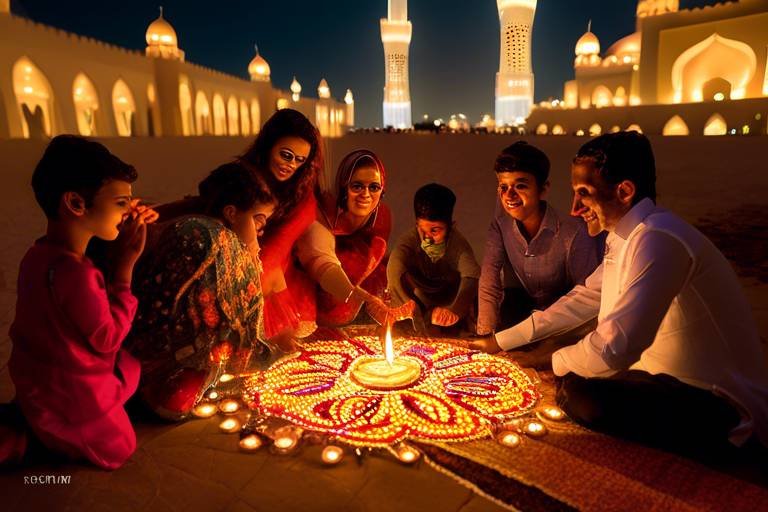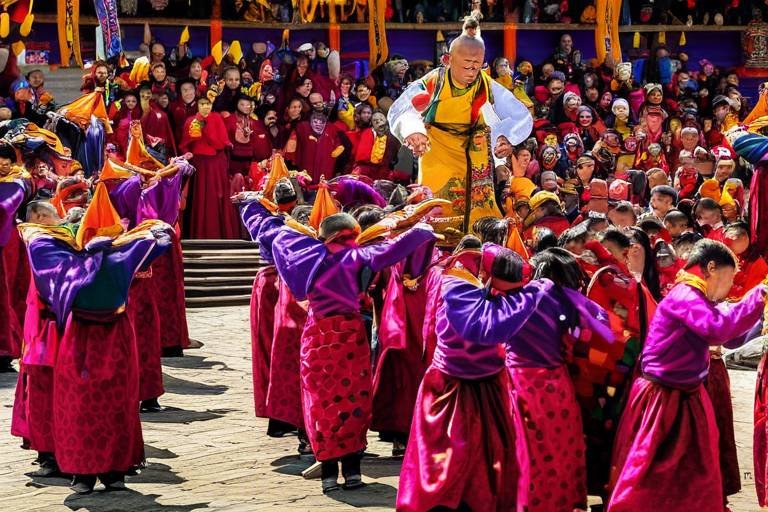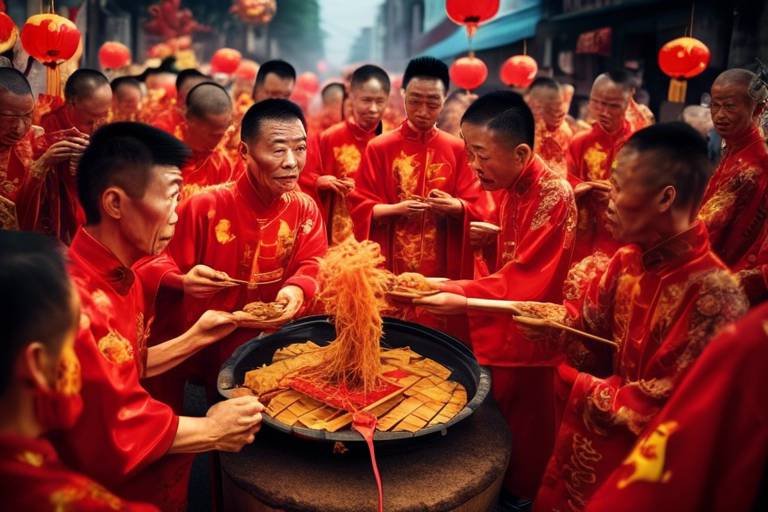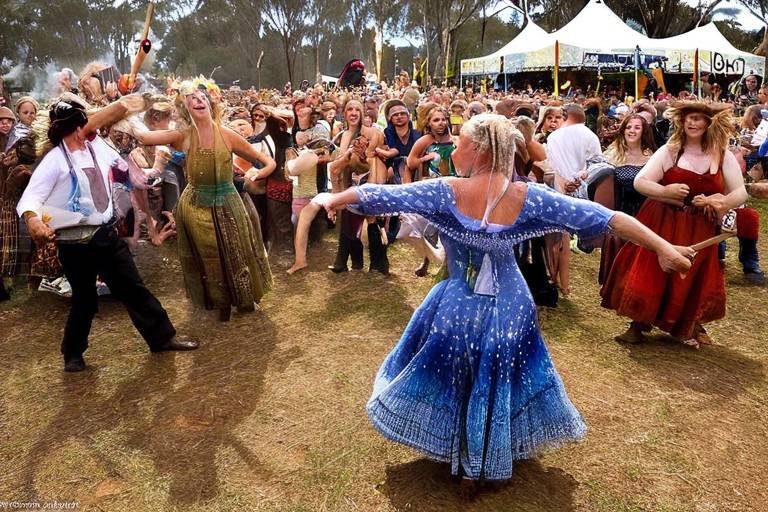The Tranquility of Japan's Obon Festival
Japan's Obon Festival is a time of serene tranquility and spiritual reflection, where ancient traditions and modern celebrations harmoniously blend. This annual event holds a special place in the hearts of the Japanese people, as they come together to honor their ancestors and express gratitude for the blessings of life.
The essence of the Obon Festival lies in its deep-rooted traditions and cultural significance, stemming from Buddhist beliefs in the cyclical nature of life and death. It is a time when ancestral spirits are believed to return to the earthly realm to visit their descendants, creating a profound connection between past and present generations.
As the festival approaches, meticulous preparations take place in homes, streets, and temples across Japan. Vibrant decorations adorn the surroundings, with iconic paper lanterns casting a soft glow and colorful kimono attire adding a touch of elegance to the festivities.
One of the highlights of the Obon Festival is the culinary delights and symbolic offerings made to honor the deceased. Special dishes like somen noodles are prepared with care, while fruits and sweets are presented as a gesture of respect and remembrance.
The rhythmic and graceful Bon Odori dance performances captivate spectators, with participants donning yukata garments and moving in harmony to traditional music. The dance symbolizes the welcoming of ancestral spirits and is a cherished tradition passed down through generations.
As night falls, the atmosphere is illuminated by the mesmerizing spectacle of candle-lit floats drifting on rivers and lakes. Accompanied by dazzling fireworks displays that light up the sky, these visual feasts create a magical ambiance during the Obon festivities.
Family reunions and visits to ancestral graves hold a special place during Obon, strengthening bonds between relatives and paying homage to departed loved ones. It is a time for reflection, gratitude, and the sharing of memories that transcend generations.
Community festivities abound during Obon, with street parades, taiko drum performances, and cultural exhibitions bringing people together in joyous celebration. The spirit of unity and togetherness permeates the air, fostering a sense of belonging and shared heritage.
As the Obon Festival draws to a close, concluding rituals mark the transition back to everyday life. Lanterns are floated on water to guide spirits back to the afterlife, and expressions of gratitude for blessings received fill the hearts of the participants, creating a sense of closure and renewal.

Origins and Significance
The Obon Festival in Japan holds deep roots in Buddhist traditions and cultural beliefs surrounding the spirits of ancestors. Originating from the Buddhist custom of Ullambana, a time when offerings are made to relieve the suffering of spirits in the afterlife, Obon has evolved into a celebration of remembrance and gratitude. It is believed that during this time, ancestral spirits return to visit their earthly families, leading to the preparation of elaborate rituals and ceremonies to honor and welcome them.
Signifying a period of reverence and reflection, the Obon Festival serves as a bridge between the living and the deceased, embodying the essence of filial piety and respect for one's ancestors. The festival's significance lies not only in honoring the past but also in strengthening familial bonds and fostering a sense of continuity and tradition across generations.

Preparations and Decorations
When it comes to the Obon Festival in Japan, preparations and decorations play a crucial role in setting the festive ambiance that honors ancestral spirits. Homes, streets, and temples undergo meticulous transformations, brimming with vibrant colors and symbolic elements. One of the most iconic decorations that adorn the surroundings during Obon is the traditional paper lanterns. These lanterns, with their gentle glow, symbolize guiding spirits back to the world of the living.
Additionally, during the Obon Festival, you can witness a burst of color as people don colorful kimono attire. The streets come alive with a kaleidoscope of hues, creating a visually stunning spectacle that adds to the celebratory atmosphere. The intricate patterns and designs on the kimonos reflect the rich cultural heritage of Japan and add a touch of elegance to the festivities.
In many households, intricate floral arrangements and seasonal decorations are meticulously arranged to welcome both living and deceased family members. The scent of incense wafts through the air, creating a serene and spiritual ambiance. Altars are adorned with offerings of food, drinks, and burning incense sticks, symbolizing respect and gratitude for the departed souls.
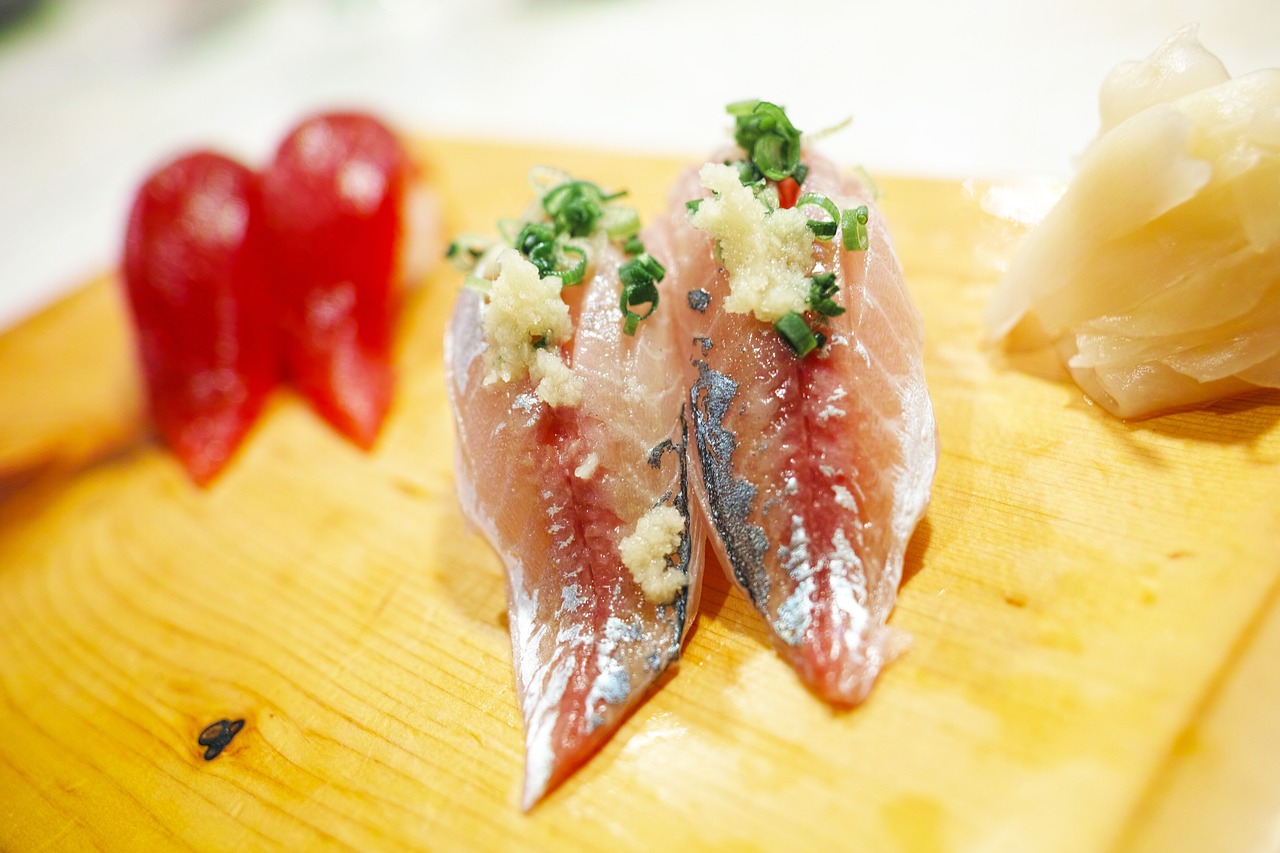
Food and Offerings
When it comes to the Obon Festival in Japan, the culinary aspect plays a significant role in honoring ancestral spirits and bringing families together. One of the key traditions during this time is the preparation of special dishes that hold symbolic meaning. For example, somen noodles are often served, symbolizing the thread of connection between the living and the dead. Additionally, fruits and sweets are meticulously arranged and offered as a gesture of respect and remembrance for the departed.
These food offerings are not just about sustenance but are deeply rooted in spiritual beliefs and cultural practices. Families take great care in selecting and presenting these dishes, infusing each offering with love and reverence. It is a way of expressing gratitude for the presence of ancestors and acknowledging their continued influence in the lives of the living.
Moreover, the act of sharing meals and partaking in these offerings together strengthens familial bonds and creates a sense of unity among relatives. The communal aspect of preparing and enjoying these traditional foods during Obon fosters a sense of connection not only with the past but also with present generations.
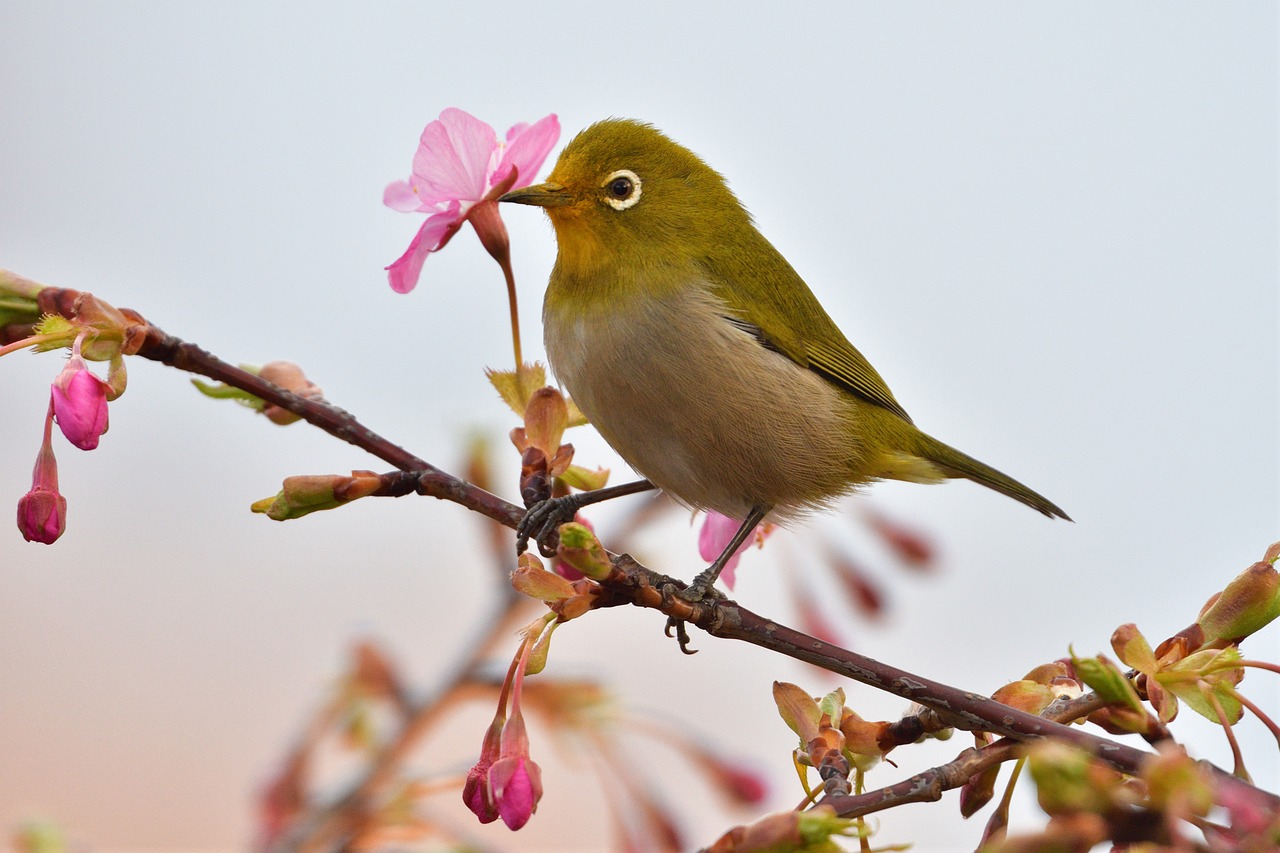
Bon Odori Dance
The is a mesmerizing display of tradition and grace that captivates both participants and spectators during Japan's Obon Festival. This rhythmic dance, performed in circles around a central stage, symbolizes the welcoming of ancestral spirits back to the earthly realm. Participants, adorned in colorful yukata garments, move in harmony to the beat of traditional music, creating a harmonious and festive atmosphere.
Originating from rural folk dances, the Bon Odori Dance has evolved into a cherished cultural tradition that brings communities together in celebration. The movements, often simple yet elegant, reflect the themes of gratitude, remembrance, and unity that define the spirit of the Obon Festival. It is a time to honor the past, connect with loved ones, and express reverence for those who have passed on.
As the sun sets and lanterns begin to glow, the Bon Odori Dance takes on a magical quality, with the music and movements intertwining to create a sense of harmony and continuity. The dance serves as a bridge between the past and present, a way to pay homage to ancestors while embracing the joys of life and community. It is a moment of shared joy and reflection, where the spirits of the past are welcomed with open hearts and joyful spirits.

Candle Floats and Fireworks
One of the most enchanting aspects of Japan's Obon Festival is the mesmerizing display of candle floats and fireworks that light up the night sky, creating a magical atmosphere that captivates both locals and visitors alike. The tradition of candle-lit floats drifting on rivers and lakes dates back centuries and symbolizes guiding ancestral spirits back to the afterlife with reverence and beauty.
As dusk falls during the Obon festivities, the serene waters come alive with the gentle glow of candle-lit floats gracefully making their way across the reflective surface, evoking a sense of peace and tranquility. The flickering flames dance in harmony with the ripples, creating a spectacle that is both solemn and awe-inspiring.
Accompanying the serene scene of the candle floats are dazzling fireworks displays that paint the night sky with vibrant colors and patterns, illuminating the darkness with bursts of light and sound. The fireworks symbolize the transient nature of life and the fleeting beauty of the moment, reminding observers to cherish the present and honor the past.
Visitors are treated to a sensory feast as they watch the intricate choreography of the candle floats and fireworks, experiencing a visual symphony that celebrates life, remembrance, and the eternal cycle of existence. The combination of flickering candlelight and explosive fireworks creates a juxtaposition of tranquility and excitement, offering a profound and unforgettable experience during the Obon Festival.

Family Reunions and Visits
Family reunions and visits hold a special place in the heart of the Obon Festival, symbolizing the bond between the living and the deceased. It is a time when families come together to honor their ancestors, share stories of the past, and strengthen familial ties. During Obon, individuals travel to their hometowns to visit ancestral graves, where they clean the tombstones, offer prayers, and make offerings of food and incense. This act of remembrance not only honors the departed but also serves as a way to connect with one's roots and heritage.
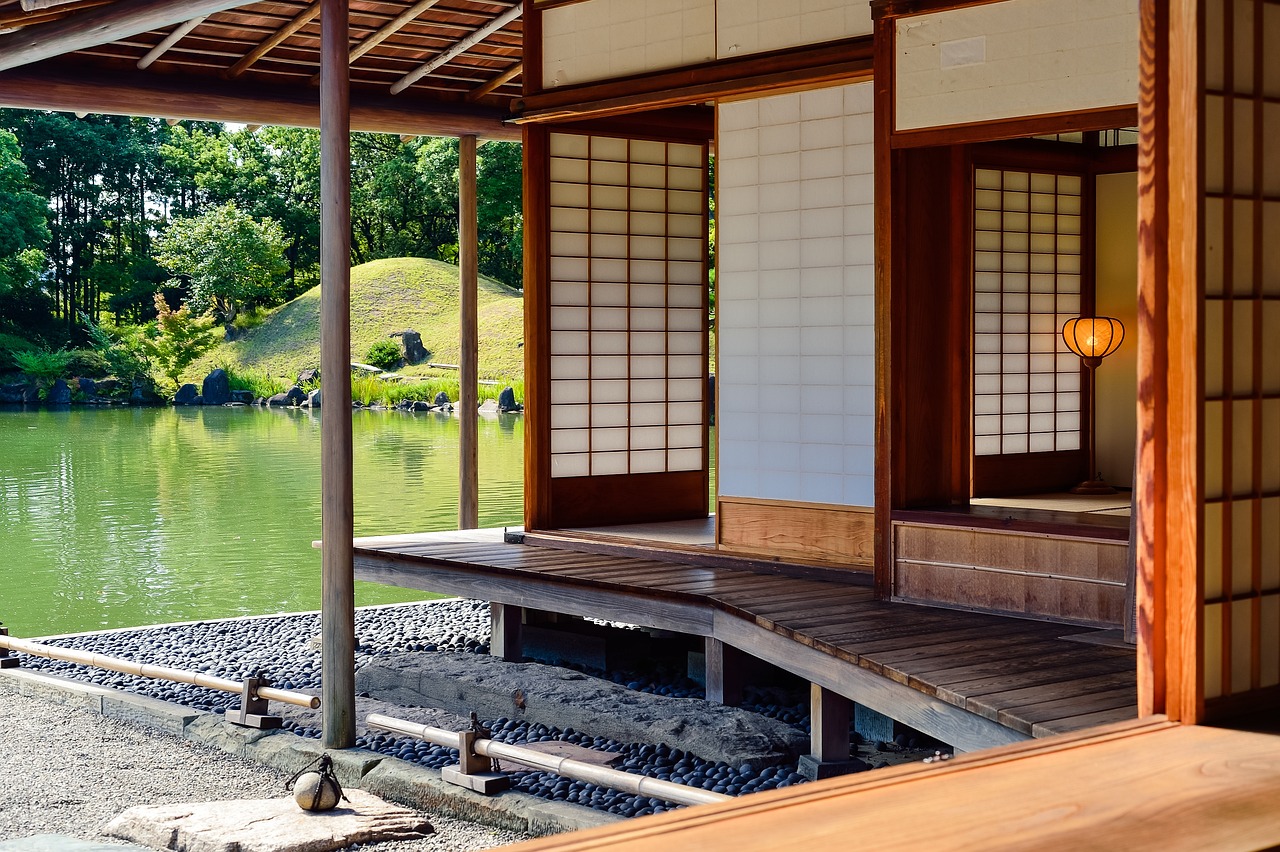
Community Festivities
Community Festivities during the Obon Festival in Japan are a vibrant tapestry of cultural celebrations that bring together people from all walks of life. From bustling street parades to mesmerizing taiko drum performances, the sense of unity and joy is palpable in the air. Families gather to pay homage to their ancestors, creating a harmonious blend of tradition and modernity.
One of the highlights of the community festivities is the array of cultural exhibitions and art displays that showcase the rich heritage of Japan. From intricate calligraphy demonstrations to captivating ikebana flower arrangements, visitors are treated to a sensory feast that reflects the artistic prowess of the country.
Throughout Japan, local communities come alive with the sound of traditional music and the sight of colorful costumes during the Obon Festival. The rhythmic beats of the taiko drums reverberate through the streets, inviting onlookers to join in the celebration. It's a time when barriers are broken, and strangers become friends through the shared experience of cultural revelry.
Moreover, street vendors line the festival grounds, offering a plethora of delectable treats ranging from savory yakisoba noodles to sweet taiyaki pastries. The aroma of grilled skewers fills the air, enticing passersby to indulge in the culinary delights of the season. It's a culinary journey that tantalizes the taste buds and leaves a lasting impression on all who partake.

Post-Festival Traditions
After the vibrant celebrations and heartfelt reunions of the Obon Festival, the concluding carry a sense of closure and reverence. One of the most symbolic customs is the floating of lanterns on water, a serene ritual that symbolizes guiding the spirits of the ancestors back to the afterlife. As the lanterns gently drift away, it is believed that the spirits are bid farewell with love and respect.
Another poignant tradition involves expressing gratitude for the blessings received during the festival. This expression of thanks can take various forms, from simple prayers offered at home altars to more elaborate ceremonies held at temples. It serves as a reminder to appreciate the connections with both the living and the departed, fostering a sense of gratitude and humility.
Additionally, some regions in Japan practice the custom of burning incense to purify the surroundings and create a sacred space for the departing spirits. The fragrant aroma of incense is believed to cleanse the atmosphere and offer a sense of peace and tranquility, ensuring a harmonious transition for the ancestral souls.
Frequently Asked Questions
- What is the significance of the Obon Festival in Japan?
The Obon Festival in Japan holds great cultural and spiritual significance as a time to honor ancestral spirits. It is rooted in Buddhist traditions and the belief that during this time, the spirits of deceased ancestors return to visit the living.
- What are some common preparations and decorations for the Obon Festival?
During the Obon Festival, homes, streets, and temples are adorned with vibrant decorations such as paper lanterns and colorful kimono attire. Meticulous preparations are made to create a festive atmosphere and welcome the spirits of the departed.
- What are some traditional food and offerings made during Obon?
Special dishes like somen noodles, fruits, and sweets are prepared as offerings to honor deceased ancestors during Obon. These culinary delights play a significant role in the rituals and ceremonies conducted during the festival.
- What is the significance of the Bon Odori dance at the Obon Festival?
The Bon Odori dance is a rhythmic and graceful performance that holds cultural significance during the Obon Festival. Participants clad in yukata garments move to traditional music, symbolizing unity and celebrating the spirits of the departed.
- How are family reunions and visits commemorated during Obon?
Family reunions and visits to ancestral graves are integral to the Obon Festival, fostering bonds between generations and paying respects to departed loved ones. These traditions emphasize the importance of honoring family heritage and ancestry.
- What are some post-festival traditions that mark the conclusion of Obon?
Post-festival traditions include rituals such as floating lanterns on water to guide spirits back to the afterlife and expressing gratitude for blessings received during Obon. These customs symbolize the peaceful transition of ancestral spirits and the appreciation for familial connections.



